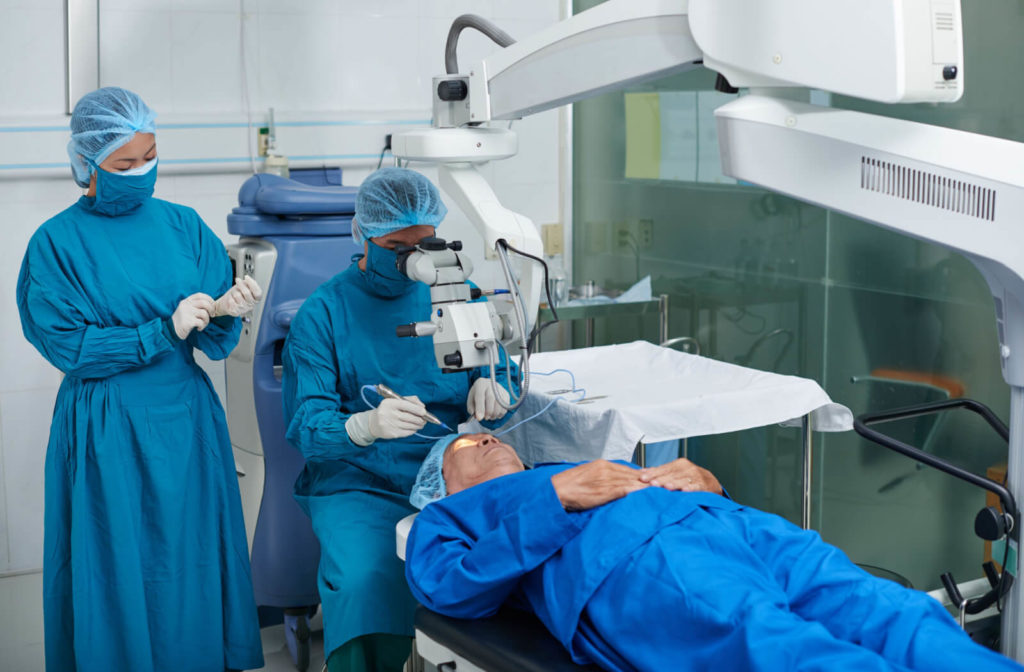Top Reasons to Visit an Optometrist Chino for Your Eye Health
Top Reasons to Visit an Optometrist Chino for Your Eye Health
Blog Article
Discovering the most recent Technological Improvements in Optometry and What They Mean for Eye Doctors
From the accuracy of Optical Coherence Tomography to the nuanced understandings supplied by AI-driven analysis devices, these advancements are establishing new criteria in patient assessment and treatment. As these developments penetrate the practice, eye doctors are encountered with the difficulty of accepting these devices to improve patient outcomes.
Innovations in Diagnostic Equipment
Advancing the field of optometry, advancements in diagnostic devices have actually changed the way eye care experts examine and diagnose ocular conditions and visual impairments. The past years has actually witnessed significant technological improvements, allowing more comprehensive and accurate assessments. Optical Coherence Tomography (OCT), for instance, provides high-resolution cross-sectional pictures of the retina, enabling the very early discovery of conditions such as glaucoma and age-related macular deterioration. This non-invasive imaging method has become crucial in contemporary optometric practice.
One more secret development is the intro of advanced corneal topography systems, which map the surface curvature of the cornea with precision. These tools are specifically advantageous for fitting call lenses and detecting corneal disorders. Digital retinal imaging has actually changed conventional ophthalmoscopy, offering in-depth, breathtaking sights of the retina that promote detailed visual exams.
The advancement of wavefront aberrometry has actually also been vital, allowing the evaluation of refractive mistakes with unrivaled precision (Eye Doctor). This modern technology aids in customizing rehabilitative lenses and enhancing medical outcomes for refractive surgeries. Jointly, these diagnostic developments empower eye doctors to supply superior person treatment, ensuring early intervention and customized treatment techniques, inevitably enhancing visual wellness outcomes
AI in Person Administration
Structure on the foundation of advanced diagnostic devices, the incorporation of fabricated knowledge (AI) in client administration stands for a transformative jump for optometry. AI systems are significantly employed to boost effectiveness, precision, and customization in person care. By analyzing huge amounts of data, AI can recognize patterns and forecast potential ocular problems, allowing optometrists to customize treatments a lot more effectively. This capability is vital in handling persistent eye diseases such as glaucoma and diabetic retinopathy, where very early discovery and continuous monitoring are vital.
In addition, AI-driven systems help with streamlined client communications and administrative processes. Automated organizing, virtual consultations, and individualized follow-up plans not only improve person satisfaction but likewise maximize time monitoring for professionals. These systems can triage patients based on the necessity of their problems, ensuring that those in crucial demand obtain timely focus.
In addition, AI boosts decision-making by giving eye doctors with evidence-based referrals and therapy pathways. By integrating data from electronic wellness records, AI devices provide understandings that inform scientific decisions, reducing the threat of mistakes and improving client results. As AI continues to develop, its role in person administration will likely expand, improving the landscape of optometric care.
Developments in Retinal Imaging
In the world of optometry, retinal imaging has actually witnessed remarkable technical developments that are improving diagnostic capabilities news and individual treatment. Developments such as Optical Coherence Tomography (OCT) and fundus digital photography have actually changed exactly how optometrists envision and analyze the retina.
Boosted imaging modalities like OCT angiography are further refining analysis precision. Eye Doctor Optometrist. Such advancements facilitate the recognition of min retinal modifications that might represent illness progression.
Furthermore, innovations in expert system are enhancing retinal imaging by allowing computerized analysis of large datasets. These systems aid optometrists in recognizing patterns a sign of pathology, consequently boosting diagnostic accuracy and efficiency. Collectively, these developments are changing retinal imaging right into a foundation of contemporary eye care, improving end results and expanding healing opportunities.
Teleoptometry's Growing Role
Teleoptometry is significantly coming to be an important component of eye care, driven by developments in electronic communication and analysis tools. This is especially helpful in underserved and country locations where accessibility to specialized eye treatment is frequently minimal.
The combination of artificial knowledge (AI) additional improves teleoptometry, allowing the evaluation of visual information and assisting in the detection of ocular problems such as glaucoma and diabetic person retinopathy. AI-powered formulas can swiftly translate complicated imaging data, offering optometrists with important understandings that reinforce scientific decision-making.
In addition, teleoptometry sustains connection of treatment with smooth integration with electronic wellness documents (EHRs), allowing optometrists to maintain comprehensive client backgrounds. When consulting with various specialists., this makes sure that individuals obtain consistent and tailored treatment also.
In spite of these advantages, obstacles continue to be, including ensuring data safety and handling individual expectations. However, teleoptometry represents a substantial stride in the direction of even more easily accessible, efficient, and patient-centered eye treatment. As modern technology develops, its role is poised to increase even more.

Future Fads in Eye Care
A myriad of cutting-edge patterns is established to improve the future of eye care, driven by technological advancements and the evolving needs of individuals. One substantial pattern is the combination of expert system (AI) in diagnostics, which promises to improve the accuracy and performance of eye exams. AI algorithms can assess substantial amounts of data from retinal photos, possibly finding problems like diabetic retinopathy and glaucoma earlier than standard methods.
Moreover, individualized medicine is acquiring grip in optometry, with hereditary testing educating personalized treatment strategies. This strategy intends to maximize individual end results by customizing interventions to specific hereditary profiles. Wearable technology, such as smart get in touch with lenses, is additionally on the perspective, offering real-time surveillance of intraocular pressure or sugar levels, hence offering continuous understandings best site into ocular and systemic health and wellness.
The adoption of increased reality (AR) and virtual reality (VR) in training and patient education and learning is one more emerging trend. These technologies offer immersive experiences that can enhance understanding and abilities both for clients and eye doctors. As these patterns evolve, optometrists must stay abreast of technological advancements to supply advanced care, guaranteeing anchor improved person outcomes and fulfillment in the dynamic landscape of eye treatment.
Conclusion

Collectively, these diagnostic developments equip optometrists to provide premium patient care, ensuring very early treatment and customized therapy approaches, eventually boosting visual health end results.

As these innovations continue to develop, eye doctors need to adapt and incorporate them into practice, eventually optimizing process effectiveness and boosting the requirement of eye care supplied to clients.
Report this page